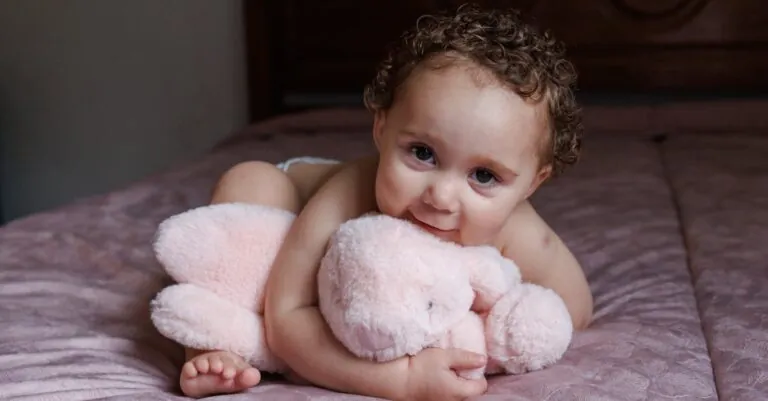Navigating the world of daycare can feel like a high-stakes game of Tetris, especially when it comes to diapering. Parents often find themselves juggling schedules, snacks, and nap times, all while ensuring their little ones stay comfortable and clean. Diapers at daycare are more than just a necessity; they’re a ticket to peace of mind for busy caregivers.
Imagine a daycare where diaper changes are as smooth as butter on a hot pancake. With the right strategies and products, parents can turn potential diaper drama into a seamless experience. From choosing the right diaper brand to understanding daycare policies, there’s plenty to consider. After all, nobody wants a surprise leak during storytime! So let’s dive into the essentials of diapering at daycare and discover how to keep those tiny tushies happy and dry.
Table of Contents
ToggleImportance Of Diapers At Daycare
Diapers play a crucial role in ensuring childcare settings remain clean and safe. Their use directly influences both health and comfort for children.
Health And Hygiene Considerations
Health and hygiene stand at the forefront of diaper usage in daycare. Regular changes prevent skin irritations, reducing the risk of diaper rash. Proper disposal practices maintain cleanliness in shared spaces. Daycare facilities often follow strict hygiene protocols to manage diaper changes effectively. These procedures include sanitizing changing areas and using gloves during diaper changes, promoting a safe environment for all children.
Comfort For Children
Comfort for children significantly enhances their daycare experience. Dependable diapers keep children dry, allowing them to engage fully in activities without distraction. Sizes and features catering to various age groups ensure a snug fit. Soft materials used in diaper design help prevent discomfort. By providing adequate absorption, caregivers can ensure children remain content, promoting a positive atmosphere throughout the daycare.
Types Of Diapers Used In Daycare
Daycare centers typically use two primary types of diapers: disposable and cloth. Understanding the differences helps parents make informed choices.
Disposable Diapers
Disposable diapers offer convenience for daycare providers. They are designed for single use, allowing quick changes between activities. Most facilities prefer disposable diapers for their ease in clean-up, minimizing the time spent on diapering. Features such as absorbent materials and leak-proof barriers enhance comfort for children. Additionally, the variety of sizes caters to different age groups, ensuring a snug fit. Many brands focus on hypoallergenic materials, which can reduce the risk of skin irritations. Regular diaper changes prevent leaks, supporting a seamless day of play and learning.
Cloth Diapers
Cloth diapers provide an eco-friendly alternative in some daycare settings. These reusable options require washing, which may seem daunting but can be managed effectively. Many centers have specific policies regarding cloth diaper care, ensuring hygiene is maintained. Cloth options come in various styles, such as pockets and all-in-ones, offering flexibility. Caregivers appreciate the softness and breathability of these materials, which promote skin health. Parents often choose cloth diapers for their sustainability, reducing landfill waste. Overall, cloth diapers can contribute to a comfortable daycare experience when managed properly.
Choosing The Right Diaper For Daycare
Selecting the right diaper for daycare impacts comfort and well-being. Consider the following factors to make an informed choice.
Factors To Consider
Absorbency plays a key role. High absorbency materials prevent leaks during playtime and naps. Size matters; a proper fit minimizes chances of sagging or chafing. Check for hypoallergenic options to reduce skin irritations, especially for sensitive skin. Ease of use cannot be overlooked. Quick changes mean less disruption for both caregivers and children. Lastly, think about disposal methods. Disposable diapers offer convenience, while cloth diapers provide an eco-friendly alternative. Understanding the daycare’s policies on diapering can further influence the choice.
Recommendations From Experts
Experts recommend choosing brands known for reliability. Research has consistently shown brands with leak-proof technology reduce diaper change frequency. Opt for soft, breathable materials that support skin health. Consulting with daycare staff can provide insights into the preferred diaper types they handle best. Prioritize convenience by preparing a sufficient supply of diapers to avoid interruptions in daily activities. Remember to label all diapers clearly to prevent mix-ups. Flexibility in diaper selection can also help accommodate children’s specific needs or preferences, enhancing their overall daycare experience.
Communication Between Parents And Daycare Providers
Effective communication between parents and daycare providers ensures a smooth diapering routine. Establishing clear expectations regarding diapering practices fosters comfort for children.
Establishing Diapering Policies
Developing diapering policies requires collaboration between parents and daycare staff. Policies should clearly outline how often diaper changes occur, preferred products, and specific procedures for addressing issues like diaper rashes. Sharing information about any allergies or sensitivities enhances the process. Parents should discuss their preferences for disposable or cloth diapers and any specific brand requirements. Having documented policies helps everyone involved stay on the same page, minimizing misunderstandings and ensuring consistent care.
Tracking Diaper Changes
Regular tracking of diaper changes keeps parents informed about their child’s needs. Daycare providers can maintain a log noting the time and condition of each change. This record serves as a reference for parents, helping them identify any potential issues. Parents benefit from receiving this information daily, ensuring they stay updated on their child’s regularity and comfort. Effective tracking practices contribute to maintaining children’s health and well-being during their time at daycare.
Conclusion
Navigating diapering at daycare can be a challenging yet essential part of a child’s daily routine. By prioritizing comfort and hygiene through effective communication and collaboration with daycare staff, parents can ensure their little ones have a positive experience. Choosing the right type of diaper—whether disposable or cloth—plays a crucial role in maintaining health and minimizing disruptions during the day. With the right strategies in place, parents can streamline the diapering process, allowing their children to focus on learning and play. Ultimately, a well-managed diaper routine not only supports children’s well-being but also fosters a nurturing environment at daycare.










